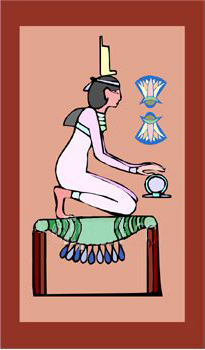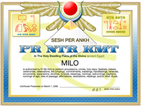Summary: Neith is the native ancient Egyptian (Kemetic) Goddess of the arts of civilization and skilled artisans.
names:

Kemetic name: Neith
Greek name: Athena
(NOTE: In addition to native variations by locality or over time, there are often several possible transliterations into the Roman alphabet used for English.)
basic information:
Neith: Goddess of the arts of civilization. Daughter of Ra.
Saïs was the center of worship of Neith.

origin of Neith:
The Goddess Neith is based on the tribal leader Neith, the earliest human for whom we know the person’s name.
One of the earliest known human civilizations was the one that left the famous cave art in what is now southern France and Spain. This civilization also stretched across northern Africa, which used to be a green, fertile land of grass and trees fed by more than a hundred rivers. A major climate change related to the end of the most recent Ice Age turned this huge area into the Sahara Desert over a period of a few thousand years. One by one the rivers dried up until the mighty Nile River was the only one left. Beautiful artwork comparable to that of the caves in southern France and Spain disappeared under the desert sands.
This climate change disrupted life for many early humans, leading to a huge refugee problem. Most of the refugees died looking for water and food. Many refugees attempted to crowd into the Nile Valley, which at the worst of the drought became a small muddy stream capable of supporting only a few thousand humans. The inhabitants of the Nile Valley, better fed and healthier than the refugees, fought bitterly to defend their water and land from the many refugees, turning everyone away at the threat of death.
At this time, tribes typically had two chiefs, a war chief who was the best warrrior and a peace chief who was the smartest (usually a shaman). The war chief led the tribe in battle, with all other decisions (including the decision to go to war) being in the hands of the peace chief.
Neith was both war chief and peace chief for her tribe. She was the most skilled warrior, unequalled in the use of the spear. But she was also the smartest memmber of her tribe, a brilliant woman who was known for her great skill at weaving.
Neith led her tribe across hundreds of miles of desert to seek refuge in the Nile Valley. In the nearby hills, her tribe was met by well armed and well fed local Nile warriors, who warned her tribe to turn back into the desert.
Neith challenged the local Nile inhabitants to single battle, Neith versus the Nile’s best champion. If Neith won, her tribe would be allowed to stay, and if Neith was defeated, her tribe would leave peacefully.
The Nile locals laughed at the idea of a girl defeating their best champion and accepted the challenge. Neith faced off a huge, powerful man, the best of the Nile warriors. Neith fought with the courage and ferocity of a tigress and a skill with the spear unmatched in all the world. In a few minutes, Neith defeated the greatest of the Nile warriors.
The Nile inhabitants went back on their agreement and demanded that Neith’s tribe return to the desert. Neith was shocked at this lack of integrity, as she had beaten the best of their champions fair and square.
An idea occurred to Neith. She noticed that the cloth of the Nile inhabitants was poorly woven, so she showed them samples of her own excellent weaving. The cloth was much better than anything the Nile inhabitants had ever seen and involved intricate weaves that they didn’t know.
Neith promised to teach the locals how to weave such fine cloth if they would let her tribe in. After much consultation the local Nile inhabitants agreed to the deal.
This was how Neith saved the lives of her entire tribe. Her people lived in the Nile Valley, intermarrying with the locals until they were absorbed into the local population.
Neith became legendary and eventually there became an anncient Egyptian Goddess with the same name. The Goddess became associated with all of the arts of civilization, but particularly the martial arts and weaving (both baskets and cloth).
The Goddess Neith was a positive role model for ancient Egyptian women, a strong and powerful woman with courage and smarts and skill. The most common female name in ancient Egypt was MeretNeith, which means “She Who Is Beloved by Neith”. Note that those Witches who are influenced by or worship Egyptian Goddesses can have a craft name that combines “Meret” with the name of their favorite Egyptian Goddess.
Neith became popular with women throughout the eastern Mediterranean. The Greek Goddess Athena is based on Neith (and is depicted with a spear and woven cloth, just like Neith). Notice how the sounds in the name Athena are almost the same sounds as in the name Neith. The Greek Goddess was a copy of the Egyptian Goddess.
Neith’s relations:
Daughter of Ra.
The Greek goddess Athena is derived from Neith.
magickal information and correspondences:
Candle colors: red
other:
religious title certificate

Get a beautiful certificate declaring that you are a priestess, priest, high priestess, high priest, hem, hemet, kher, sesh per ankh, scribe, witch, or shaman of Neith. This is a real religious certificate meeting government standards for conducting marriages and other ceremonies.
pictures:
- Picture of Neith (PICTURE)
external links:
If you follow any of the links offered on this web site, no spell begging. Especially no love spell begging.
If you have a Neith-related web page, please send the URL to Milo. Please indicate if there is a picture on your web page.













